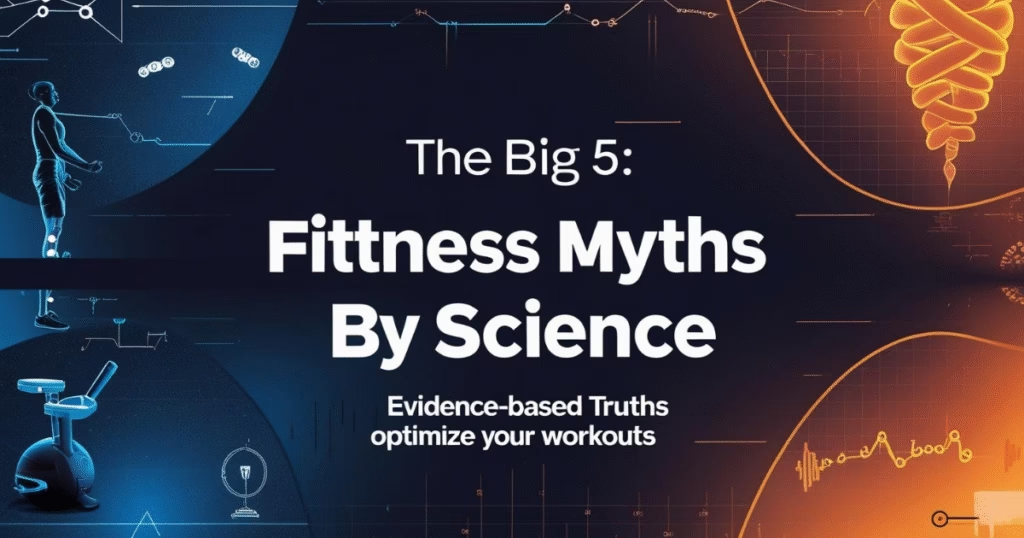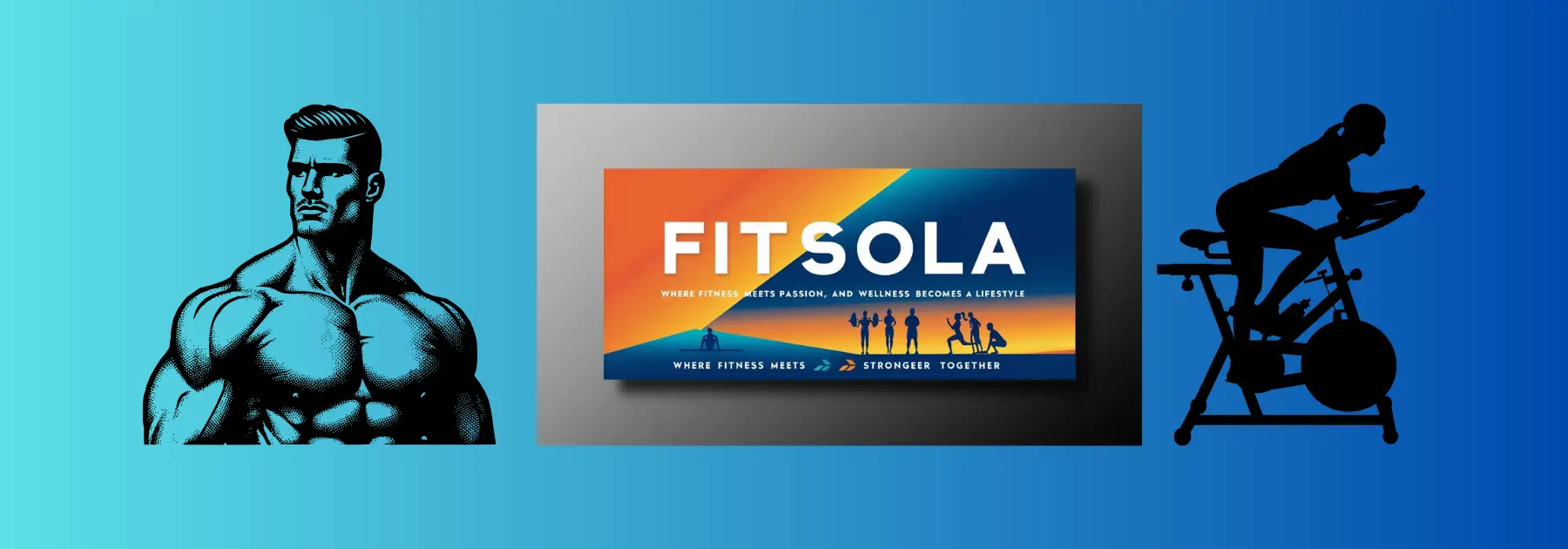Let’s face it, navigating the fitness world can feel like wading through a swamp of contradictory advice. One day carbs are the enemy, the next they’re essential fuel. Spot reduction promises a quick fix, while endless cardio seems like the only path to weight loss. It’s exhausting, confusing, and frankly, can derail even the most motivated individuals.
Why does this matter? Because believing in fitness myths isn’t just frustrating; it can lead to wasted time, unnecessary effort, plateaus, injuries, and ultimately, giving up on your goals altogether. You deserve clarity, efficiency, and results based on science, not bro-science or marketing hype.
That’s why we’ve gone straight to the experts – certified personal trainers, exercise physiologists, registered dietitians, and sports scientists – to dismantle the Top 5 Most Persistent Fitness Myths. Get ready to have your assumptions challenged and your workout strategy upgraded. (Spoiler: Myth #3 genuinely surprises most people!)
Myth #1: “Lifting Weights Makes Women Bulky”
The Belief: This is arguably one of the most pervasive and damaging myths, particularly deterring women from one of the most beneficial forms of exercise. The fear is that picking up dumbbells will automatically lead to large, masculine muscles.
Why It Persists: Media portrayals often show extreme female bodybuilders (who train specifically and intensely for that look, often with pharmaceutical assistance), creating a skewed perception. Additionally, initial strength training can cause temporary water retention and muscle inflammation, making people feel puffier, which is misinterpreted as “bulking.”
Expert Debunking (Dr. Sarah Chen, Exercise Physiologist & Women’s Health Specialist):
“Women simply do not have the same levels of testosterone as men, the primary hormone responsible for significant muscle hypertrophy. Building substantial muscle mass is incredibly hard work for anyone, requiring specific, intense training, significant calorie surplus, and often years of dedicated effort. What strength training actually does for women is far more empowering:
- Tones & Shapes: Builds lean muscle, creating definition and a sculpted appearance.
- Boosts Metabolism: Muscle is metabolically active, burning more calories at rest than fat.
- Strengthens Bones: Crucial for preventing osteoporosis, especially as women age.
- Improves Functional Strength: Makes daily activities easier and reduces injury risk.
- Enhances Confidence & Body Composition: Leads to a stronger, leaner physique, not a bulky one.”
The Takeaway: Ditch the fear! Strength training is essential for women’s health, longevity, and achieving a strong, defined physique. Embrace the weights – they are your allies, not your enemies. Start with manageable weights, focus on form, and progress gradually. The result? Strength, resilience, and confidence, not bulk.
Myth #2: “Spot Reduction is Possible”
The Belief: You can burn fat specifically from a targeted area by exercising the muscles underneath. Think endless crunches for a flat stomach or leg lifts for thinner thighs.
Why It Persists: Wishful thinking! We all have stubborn areas. The fitness industry also capitalizes on this desire with gadgets and routines promising “targeted fat loss.” Feeling the burn in a specific muscle group is often misinterpreted as burning fat in that exact spot.
Expert Debunking (Mark Johnson, CSCS, Strength & Conditioning Coach):
“Fat loss is systemic. When your body needs energy, it pulls from fat stores distributed throughout your body based on genetics, hormones, and other factors – not primarily from the muscles you’re actively using. Doing crunches strengthens your abdominal muscles, but it doesn’t selectively burn the fat layer covering them. That fat loss comes from creating an overall calorie deficit through diet and exercise. You can’t control where you lose fat first; your body decides that.”
The Takeaway: Stop wasting hours on targeted ab exercises hoping for a six-pack reveal. Focus on:
- Overall Calorie Deficit: Burn more calories than you consume through a balanced diet and exercise.
- Full-Body Strength Training: Builds muscle, boosts metabolism, and improves body composition everywhere.
- Cardiovascular Exercise: Burns calories and improves heart health.
- Patience & Consistency: Genetics play a role in fat distribution. Trust the process for overall fat loss, and your stubborn areas will eventually reduce as your overall body fat percentage decreases.
Myth #3: “Muscle Turns Into Fat If You Stop Working Out” (Surprise!)
The Belief: When people stop exercising, especially strength training, and seem to gain fat while losing muscle definition, the common explanation is that the unused muscle magically “turns into” fat.
Why It Persists: It looks like a transformation is happening. Someone stops lifting, their muscles appear less defined, and they might gain some body fat, leading to the perception of muscle converting to fat. It’s a simple, albeit incorrect, cause-and-effect narrative.
Expert Debunking (Dr. Alex Rivera, PhD in Kinesiology):
“This is a fundamental biological misunderstanding. Muscle and fat are two entirely different types of tissue with completely different structures and functions. It’s physiologically impossible for one to morph into the other, just like you can’t turn an apple into an orange. What actually happens:
- Muscle Atrophy: When you stop using your muscles through resistance training, they begin to shrink (atrophy) due to disuse. Less muscle mass means a lower resting metabolic rate (RMR).
- Fat Gain: If your calorie intake remains the same as when you were active, but your RMR is now lower (thanks to less muscle) and you’re burning fewer calories through activity, you create a calorie surplus. This surplus is stored as body fat.
- The Visual Effect: You lose firm muscle tissue and gain soft fat tissue in the same areas. It looks like muscle turned to fat, but it’s actually two separate processes happening simultaneously: muscle loss and fat gain.”

The Takeaway: Muscle doesn’t become fat. Stopping exercise causes muscle loss and can lead to fat gain if eating habits don’t adjust. The solution? Maintain some level of activity (even bodyweight exercises help) and adjust your calorie intake if you significantly reduce your training volume to prevent unwanted fat gain.
Myth #4: “Cardio is the Best (or Only) Way to Lose Weight”
The Belief: Hours on the treadmill, elliptical, or stationary bike is the golden ticket to shedding pounds. Weight training is seen as secondary, only for building muscle, not burning fat.
Why It Persists: Cardio does burn calories during the session, and the numbers on the machine provide immediate (though often inflated) feedback. Sweating profusely also feels like hard work is being done. Many popular weight loss programs heavily emphasize cardio.
Expert Debunking (Lisa Martinez, Registered Dietitian & Certified Personal Trainer):
“While cardio is excellent for cardiovascular health and burns calories during the workout, its effectiveness for sustainable weight loss is often overstated, especially when done in isolation. Here’s why:
- Adaptation: Your body becomes efficient at steady-state cardio over time, burning fewer calories doing the same workout.
- Minimal EPOC: Steady-state cardio generally has a low Excess Post-exercise Oxygen Consumption (EPOC) – the “afterburn” effect where your body burns extra calories recovering.
- Muscle Loss Risk: Excessive cardio, especially without adequate protein and strength training, can lead to muscle loss, lowering your metabolic rate.
- Strength Training’s Metabolic Edge:
- Higher EPOC: Intense strength training, especially circuits or compound lifts, creates a significantly higher EPOC, meaning you burn more calories for hours after your workout.
- Muscle Building: Muscle is metabolically active tissue. The more muscle you have, the higher your Basal Metabolic Rate (BMR), meaning you burn more calories 24/7, even while sleeping.
- Body Composition: Strength training helps you lose fat while preserving or building muscle, leading to a leaner, more toned physique than cardio alone. Muscle takes up less space than fat, so even if the scale moves slower, your body shape improves dramatically.”
The Takeaway: Cardio is beneficial, but strength training is the metabolic powerhouse for sustainable fat loss and body composition change. The most effective approach combines:
- Strength Training: 3-4 times per week (focus on compound movements).
- Moderate Cardio: For heart health (2-3 times per week, maybe HIIT 1x).
- Proper Nutrition: Creating a sustainable calorie deficit with adequate protein.
Myth #5: “No Pain, No Gain” / “You Must Be Sore to Have Worked Out Effectively”
The Belief: A workout isn’t effective unless you’re completely wrecked during it and painfully sore for days afterward. Pushing through extreme pain is necessary for results.
Why It Persists: The association of intense effort (and the resulting soreness) with progress. DOMS (Delayed Onset Muscle Soreness) is a tangible feeling that makes people feel like they “did something.” The phrase itself is deeply ingrained in fitness culture. Extreme fitness challenges showcased online amplify this.
Expert Debunking (David Kim, Physical Therapist & Sports Rehab Specialist):
“This myth is not only false but potentially dangerous. Pain is your body’s warning signal. While muscle fatigue and mild soreness (DOMS) 24-72 hours after a new or intensified workout are normal, they are not reliable indicators of workout effectiveness or muscle growth.
- Pain vs. Discomfort: There’s a difference between the challenging discomfort of muscular effort and sharp, joint, or nerve pain. The latter signals potential injury. “No pain, no gain” encourages ignoring these vital signals.
- DOMS Isn’t Mandatory: You can have incredibly effective workouts that stimulate muscle growth and strength gains without significant soreness, especially as your body adapts. Consistent training often reduces DOMS.
- Overtraining Risk: Constantly pushing to extreme soreness hinders recovery, increases injury risk, suppresses the immune system, and can lead to burnout or overtraining syndrome – which halts progress.
- Effective Workouts Focus on Progressive Overload: True progress comes from gradually increasing the challenge over time (more weight, reps, sets, or decreased rest) with good form, not from inducing crippling soreness every session.”
The Takeaway: Listen to your body. Consistency with good form and progressive overload trumps sporadic, agony-inducing sessions every time. Aim for challenging workouts where you feel muscular fatigue, but stop if you feel sharp or joint pain. Mild soreness is okay, but it shouldn’t be the goal. Prioritize proper recovery (sleep, nutrition, hydration) as much as the workout itself.
Beyond the Debunking: Building a Smarter Fitness Foundation
Dismantling these myths clears the path for a more effective, sustainable, and enjoyable fitness journey. Here’s how to move forward intelligently:
- Seek Credible Sources: Look for information from certified professionals (CSCS, CPT, RD, PhD in relevant fields) and reputable institutions. Be wary of fads and influencers selling quick fixes.
- Prioritize Consistency: Showing up regularly, even with moderate effort, yields far better long-term results than sporadic, all-out efforts that lead to burnout or injury.
- Focus on Form: Proper technique prevents injury and ensures you’re effectively targeting the intended muscles. Don’t ego lift! Start lighter and master the movement.
- Embrace Strength Training: Regardless of your gender or primary goal, include resistance training 2-4 times per week. It’s foundational for metabolism, bone health, functional ability, and body composition.
- Nutrition is Paramount: You can’t out-exercise a poor diet. Focus on whole, minimally processed foods, adequate protein, and a calorie intake aligned with your goals (deficit for fat loss, maintenance or surplus for muscle gain).
- Listen to Your Body: Rest is not laziness; it’s when your body repairs and gets stronger. Differentiate between needing to push through mental fatigue and needing to stop due to pain. Schedule rest days.
- Manage Expectations: Fitness is a marathon, not a sprint. Sustainable results take time, patience, and consistent effort. Celebrate non-scale victories like increased energy, better sleep, improved mood, lifting heavier weights, or clothes fitting better.
Conclusion: Empowered by Truth
The fitness landscape is riddled with misinformation, but armed with science and expert insight, you can now navigate it with confidence. We’ve shattered the illusion that women bulk up easily from weights, exposed the futility of spot reduction, clarified that muscle and fat are distinct entities (no transformations involved!), highlighted strength training’s superior metabolic impact over excessive cardio, and debunked the dangerous “no pain, no gain” mantra.
Myth #3 – the impossibility of muscle turning into fat – often genuinely surprises people, revealing how deep-seated some misconceptions can be. Understanding the actual processes (atrophy + fat gain) is crucial.
By letting go of these myths, you free yourself to pursue fitness intelligently and effectively. Focus on evidence-based strategies: consistent strength training, balanced nutrition, adequate recovery, and listening to your body. Ditch the extremes, embrace the science, and build a stronger, healthier, and more sustainable version of yourself. Your fitness journey just got a whole lot clearer – and more rewarding.
What fitness myth surprised YOU the most? Have you believed any of these in the past? Share your thoughts and experiences in the comments below – let’s keep the conversation (and the myth-busting) going!




[…] Why the Muscle-Fat Ratio Matters More Than Weight […]